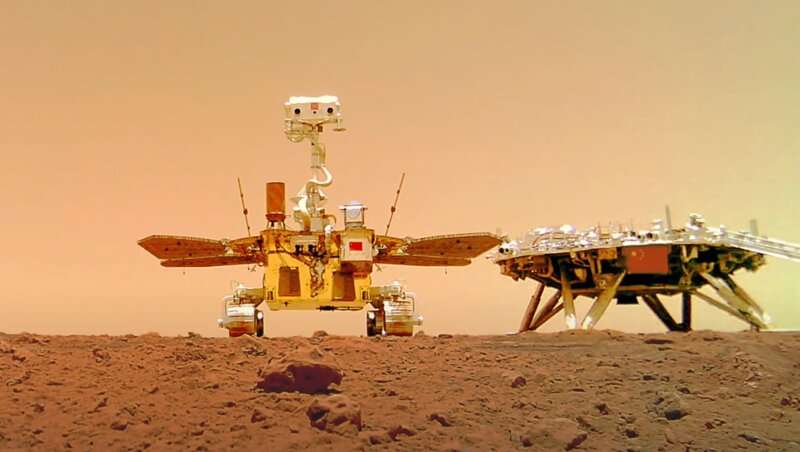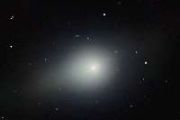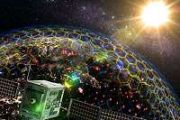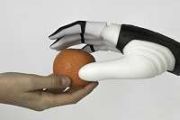
Copernical Team
NASA to share tools, resources at upcoming agriculture conference
 NASA will participate in the 2022 Commodity Classic conference, America's largest farmer-led, farmer-focused educational and agricultural experience.
Agency representatives will discuss information, tools, and resources, drawn from the NASA's Earth observation satellites and science research. Farmers and others regularly make decisions about water management, planting, and market decisions
NASA will participate in the 2022 Commodity Classic conference, America's largest farmer-led, farmer-focused educational and agricultural experience.
Agency representatives will discuss information, tools, and resources, drawn from the NASA's Earth observation satellites and science research. Farmers and others regularly make decisions about water management, planting, and market decisions Iran says puts new military satellite in orbit
 Iran announced Tuesday it had successfully placed a military satellite in orbit, as talks on reviving a 2015 nuclear deal between Tehran and major powers reach a critical stage.
"Iran's second military satellite - named Nour-2 - has been launched into space by the Qassed rocket of the aerospace wing of the Revolutionary Guards and successfully placed in orbit 500 kilometres (310 miles) a
Iran announced Tuesday it had successfully placed a military satellite in orbit, as talks on reviving a 2015 nuclear deal between Tehran and major powers reach a critical stage.
"Iran's second military satellite - named Nour-2 - has been launched into space by the Qassed rocket of the aerospace wing of the Revolutionary Guards and successfully placed in orbit 500 kilometres (310 miles) a SpaceX plans another Starlink launch as Ukraine uses the service during conflict
 SpaceX plans to launch more Starlink communications satellites from Florida on Wednesday as the Ukrainian government uses the service during its defense against the Russian invasion.
The use of satellite communications by defenders in a conflict, where ground communications may be destroyed at any moment, can make a big difference in the outcome, John Scott Railton of the University of
SpaceX plans to launch more Starlink communications satellites from Florida on Wednesday as the Ukrainian government uses the service during its defense against the Russian invasion.
The use of satellite communications by defenders in a conflict, where ground communications may be destroyed at any moment, can make a big difference in the outcome, John Scott Railton of the University of Rocket Lab begins qualification of highest performing space solar cell technology
 Rocket Lab USA, Inc. reports that its next-generation solar cell technology is transitioning into qualification. The cell is the next product from SolAero's patented Inverted MetaMorphic (IMM) solar cell technology, dubbed IMM-ss, that is expected to exhibit a conversion efficiency of ~33.3% in volume production. IMM-ss is the 4th generation IMM product created by SolAero Technologies Inc. (SolA
Rocket Lab USA, Inc. reports that its next-generation solar cell technology is transitioning into qualification. The cell is the next product from SolAero's patented Inverted MetaMorphic (IMM) solar cell technology, dubbed IMM-ss, that is expected to exhibit a conversion efficiency of ~33.3% in volume production. IMM-ss is the 4th generation IMM product created by SolAero Technologies Inc. (SolA Data from Mars rover Zhurong shows evidence of wind, and possibly water, erosion

A team of researchers affiliated with multiple institutions in China and one each from Canada and Germany, has found data from the Chinese Mars rover Zhurong over its first 60 sols, showing evidence of wind erosion and possibly impacts from water erosion, as well. In their paper published in the journal Nature Geoscience, they discuss what they have found thus far.
China's Mars rover Zhurong has been on the surface of Mars since May of last year. During that time, it has rolled approximately 450 meters over the course of 60 Martian days (sols). Recently, the team working with Zhurong made the data from the rover public. In this new effort, the researchers have been studying the data sent back to learn more about what it has found.
Zhurong was deployed on the planet's Utopia Planitia—a volcanic plain situated in the northern hemisphere.
First photos from the Moon under the hammer in Denmark

The first NASA photographs taken on the Moon, including the first shot of an "Earthrise" and Buzz Aldrin walking on the surface, will be auctioned off in Copenhagen on Wednesday.
"One of my favourite photos from this fantastic collection depicts a photo of Buzz Aldrin taken by Neil Armstrong, and you can actually see Neil Armstrong being reflected in Buzz Aldrin's visor", Kasper Nielsen, the head of the Bruun Rasmussen auction house's valuation team, told AFP.
A total of 74 unique NASA photographs are up for sale, including 26 taken on the Moon during the Apollo missions in the 1960s and 1970s.
NASA Studies 'New' 50-Year-Old Lunar Sample to Prep for Return to Moon
 People say good things come to those who wait. NASA thinks 50 years is the right amount of time as it begins tapping into one of the last unopened, Apollo-era lunar samples to learn more about the Moon and prepare for a return to its surface.
The sample is being opened at NASA's Johnson Space Center in Houston by the Astromaterials Research and Exploration Science Division (ARES), which sa
People say good things come to those who wait. NASA thinks 50 years is the right amount of time as it begins tapping into one of the last unopened, Apollo-era lunar samples to learn more about the Moon and prepare for a return to its surface.
The sample is being opened at NASA's Johnson Space Center in Houston by the Astromaterials Research and Exploration Science Division (ARES), which sa California fire led to spike in bacteria, cloudiness in coastal waters
 The November 2018 Woolsey Fire in Southern California's Los Angeles and Ventura counties left more than a nearly 100,000-acre burn scar behind: It also left the adjacent coastal waters with unusually high levels of fecal bacteria and sediment that remained for months.
For a new study, published in Nature Scientific Reports, scientists combined satellite imagery, precipitation data, and wat
The November 2018 Woolsey Fire in Southern California's Los Angeles and Ventura counties left more than a nearly 100,000-acre burn scar behind: It also left the adjacent coastal waters with unusually high levels of fecal bacteria and sediment that remained for months.
For a new study, published in Nature Scientific Reports, scientists combined satellite imagery, precipitation data, and wat North Korea claims new test of 'reconnaissance satellite' component
 North Korea carried out "another important test" towards the development of a reconnaissance satellite, state media said Sunday, but analysts warned it was a thinly-veiled ballistic missile launch, just days before South Korea elects a new president.
From hypersonic to medium-range ballistic missiles, Pyongyang test-fired a string of banned weaponry in January and last week launched what it
North Korea carried out "another important test" towards the development of a reconnaissance satellite, state media said Sunday, but analysts warned it was a thinly-veiled ballistic missile launch, just days before South Korea elects a new president.
From hypersonic to medium-range ballistic missiles, Pyongyang test-fired a string of banned weaponry in January and last week launched what it China launches seven new satellites
 China has successfully sent seven satellites into space from the Xichang Satellite Launch Center in southwest China's Sichuan Province Saturday.
Six satellites produced by Beijing-based GalaxySpace and a commercial remote sensing satellite were launched by a Long March-2C carrier rocket at 2:01 p.m. (Beijing Time) and have entered their planned orbit.
The satellites will verify the n
China has successfully sent seven satellites into space from the Xichang Satellite Launch Center in southwest China's Sichuan Province Saturday.
Six satellites produced by Beijing-based GalaxySpace and a commercial remote sensing satellite were launched by a Long March-2C carrier rocket at 2:01 p.m. (Beijing Time) and have entered their planned orbit.
The satellites will verify the n 



























